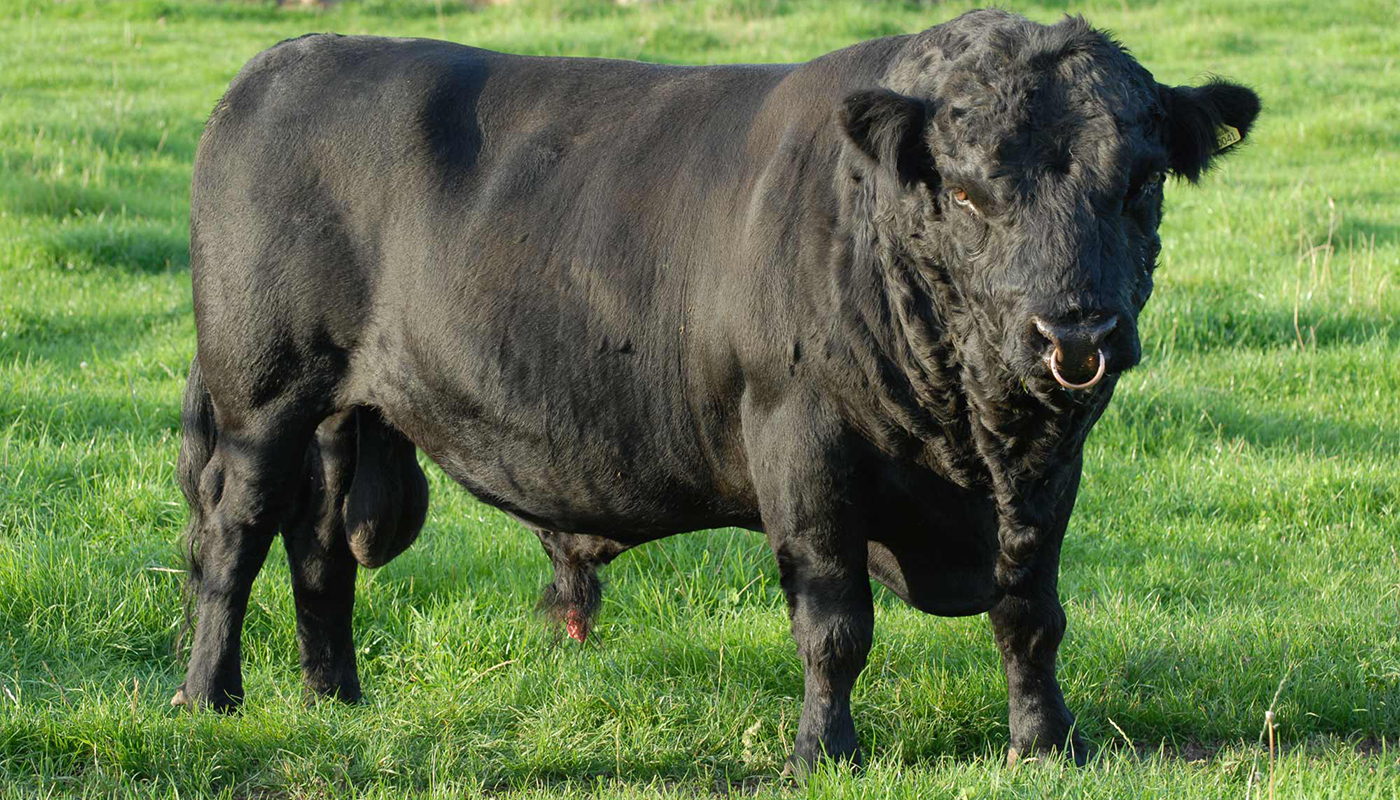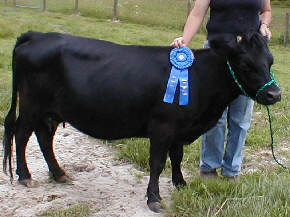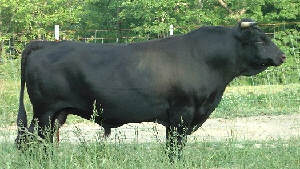With the rise of farm-to-table eating and artisanal meats many diners are seeking out flavorful beef from non-commercial cattle breeds. One such breed gaining popularity is Dexter beef a tender, succulent meat from small, hardy cows native to Ireland.
But what exactly is Dexter beef? Let’s explore the origins, characteristics, and taste that set this meat apart.
An Overview of Dexter Cattle
Dexter cattle are a heritage Irish breed of small, dual-purpose cows used for both milk and meat. Here are some quick facts:
-
Originated in southern Ireland in the 1700s
-
Named after the estate of a Mr, Dexter who helped establish the breed
-
Small-framed, about half the size of conventional cattle
-
Thrive on marginal pasture unsuitable for larger breeds
-
Require minimal housing and veterinary inputs
-
Very protective of their calves
-
Coat color can be black, dun or red
-
Slowly growing and late maturing
Their modest stature and hardy nature make them perfect grazers on the rugged Irish landscape. Let’s delve deeper into why these petite bovines produce such phenomenal beef.
What Makes Dexter Beef Special?
Several intrinsic qualities set Dexter beef apart from conventional beef:
Taste
-
Rich, beefy, savory flavor with a hint of sweetness
-
Finely marbled with a webbed “spider web” pattern
-
Juicy, tender and succulent texture
Nutrition
-
High in heart-healthy omega-3 fatty acids
-
More conjugated linoleic acid (CLA) than regular beef
-
Higher iron, zinc and B12 than other red meats
Sustainability
-
Thrive on grass without grain feeding
-
Excellent for regenerative, pasture-based farming
-
Lower methane emissions than large cattle
-
Preserve biodiversity as a heritage breed
Animal Welfare
-
Calves stay with mothers until weaning
-
Can live outdoors year-round
-
Not pushed for fast weight gain
-
Typically no dehorning or confinement pens
So Dexter beef provides a tasty, ethical alternative to conventional beef production.
Why is Dexter Beef So Tender and Flavorful?
Two main factors account for the renowned tenderness and succulence of Dexter beef:
1. Marbling
Dexter cattle are genetically prone to abundant intramuscular fat, aka marbling. This webbing of fat within the muscle adds immense flavor. It also keeps the meat tender and juicy during cooking.
2. Slow Maturation
As a heritage breed, Dexters grow slower and mature later than commercial cattle. Their beef has more time to develop flavor and tenderness. Most Dexters are slaughtered between 24-48 months vs. 18 for conventional steers.
This slow pace of growth under stress-free conditions allows superb eating quality to emerge in the beef.
How Did Dexter Cattle Originate?
The Dexter breed has a long history in Ireland. Here’s a quick timeline:
1700s
-
Bred as a dual-purpose cow (milk & meat) on small farms in southern Ireland.
-
Valued for thriftiness and ability to thrive on meager forage.
Early 1800s
-
Recognized as a distinct breed and named after estate of Mr. Dexter.
-
Officially recorded in the Irish Herd Book registry.
1900s
-
Population declined sharply during the Great Famine and industrial agriculture.
-
Narrowly avoided extinction in the 1970s.
Today
-
Considered a recovering heritage breed.
-
Used in grass-fed beef programs and sustainable farms.
So after centuries of adaptation to Ireland’s climate and pasture, Dexter cattle became perfectly suited to producing premium island beef.
What is the Typical Size of Dexter Cattle?
The most obvious trait of Dexter cows is their diminutive stature compared to conventional cattle breeds.
Mature Heights
-
Cows stand 36-44 inches tall at the shoulder
-
Bulls range from 38-48 inches tall
Mature Weights
-
Cows weigh from 650-850 lbs
-
Bulls range from 850-1100 lbs
By comparison, a typical Angus cow can weigh 1300-1500 lbs! So as you might guess, Dexter cattle have…
Smaller Carcass Sizes
The dressed carcass of a Dexter steer weighs 145-220 lbs. Here’s how that compares:
-
Angus: 600-800 lbs
-
Hereford: 500-700 lbs
-
Jersey: 400-500 lbs
So Dexter carcasses are less than half the size of conventional beef breeds. However, their meat still carries the same rich, beefy flavor.
How Does Smaller Size Impact Meat Cuts?
The modest carcass size of Dexters influences cut dimensions:
-
Thicker steaks – A 10 oz Dexter steak will be thicker than steak from a larger carcass. This enhances cooking control and flavor.
-
Smaller roasts – Dexters yield smaller yet very tasty roasts ideal for smaller households.
-
Less waste – With less bone and fat trim, Dexters offer excellent meat yield per pound of carcass weight.
While tiny compared to Angus, Dexters still produce full-flavored steaks, roasts and other prime cuts. The smaller portions suit modern cooking needs.
What is the Typical Meat Yield per Carcass?
Despite their petite size, Dexters yield an impressive amount of meat per carcass:
-
Dressing percentage of 56% or higher
-
Up to 63% meat yield on the rail
-
Only 15-20% bone and fat trim
By contrast, Angus cattle may yield only 50-55% meat from the carcass. So Dexters offer more edible meat for their modest carcass weight.
How Much Does Dexter Beef Cost?
The premium quality of Dexter beef does come at a price. Some typical retail costs:
-
Ground beef: $6-$9 per lb
-
Stew meat: $7-$12 per lb
-
Steaks: $18-$26+ per lb
-
Roasts: $12-$18 per lb
So Dexter beef usually costs 1.5 to 2 times more than conventional beef. However, many feel the unique flavor and ethics justify the higher price for special occasions or as a treat.
What Dishes Showcase Dexter Beef Best?
The rich flavor and tenderness of Dexter beef suits dishes where beef stars as the centerpiece:
-
Pan-seared or grilled steaks
-
Roast beef with jus
-
Beef bourguignon or stroganoff
-
Homemade burgers
-
Meatballs, meatloaf or cottage pie
-
Beef stew or osso bucco
Simple preparations allow the succulence and flavors of the meat to shine.
Where Can You Buy Dexter Beef?
Dexter beef remains limited, but a few specialty suppliers exist:
-
Direct from Dexter cattle farms & ranches
-
Online meat delivery companies
-
Farmers markets and CSAs in regions with Dexter producers
-
Specialty butcher shops
-
Grocery stores and clubs in progressive beef markets like California
Seeking out a local Dexter farm is a good option for superb beef. Home delivery is also gaining traction.
Is Dexter Beef Right for You?
If you value delicious flavor, ethical production and discovering unique meat, then Dexter beef deserves a taste. Although pricy, it delivers a superb eating experience. Supporting heritage breed farmers helps sustain agricultural biodiversity.
Still have questions about Dexter cattle and their famed flesh? Let the experts know! This breed has endured for centuries in Ireland, and with our help, the future looks bright for Dexter beef.

HistoryThe Dexter originated in the South Western region of Ireland where they were originally kept by small landholders and known as the “poorman’s cow”. Like the Kerry, they are descended from the predominately black cattle of the early Celts. The frequently heard theory that the Dexter are a comparatively new breed is a complete fallacy as the breed is fully described and mentioned by its proper name, in a report on Irish cattle written in 1845, by Mr David Low. From this publication it is noted that the breed owes its modern appearance, name, and probably qualities to a Mr Dexter who was agent to a Lord Howarden who came to Ireland in 1750 and made his home in Co Tipperary. David Low stated that a Mr Dexter had produced his curious breed by selection from the best of the hardy mountain cattle of the area, and to have succeeded to a very high degree. At the turn of the 20th century, Dexters became the show cattle of the English gentry. As the 20th century progressed, Dexter numbers declined. In the 1970s, they were designated as rare and endangered. More recently, their attractiveness to small landholders has seen a significant increase in their numbers globally. As a result, the Dexter is the best example of a domestic cattle breed saved from extinction.
The Dexter breed is a small breed of cattle. It is a dual-purpose breed, with the average weight of a cow being some 300 – 350 Kgs and standing 92cm – 107cm at the shoulder. There are two recognized types, short legged and non-short, both of which have their equal merits. The breed comes in three colours, predominately black, but also red and dun. Most are horned although a very few naturally polled animals are becoming available. Dexter cows are extremely maternal and because of their dual purpose qualities will milk well. Calving problems are rare and newly born calves are up on their feet very quickly with calves weighing 25-35 pounds at birth. Heifers mature young and can be put to the bull at 15 – 18 months of age. Dexters are noted for their longevity and can live up to 25 years and should breed regularly for 14 years or more. The breed is early maturing. Beef of excellent quality and flavour, with good marbling, can be produced economically. Dexter steers can finish on grass at 20 -24 months of age without supplementary feeding, with average carcase weights of between 145 – 220 Kgs. Because their good meat to bone ratio, a killing-out percentage of over 56% can be achieved. Milk yields vary as to whether the cows are kept for dairy cows, sucklers or house cows. For instance, the average daily milk yield for a house cow will be some 8 – 10 litres (2450 – 3050 litres per 305 day lactation). A cow kept as a suckler will raise its own calf as well as a larger commercial calf and do them both well. Dexters kept as dairy cows will yield on average, 10 – 12 litres daily (3050 – 3660 litres per 305 day lactation), with some individuals yielding 14 litres or more (4080 litres per 305 day lactation). The milk is of very good quality with high butterfat and protein levels; average BF % is well over 4% and protein 3.51%. Mature cows can be successfully crossed with most native beef breeds, and will produce excellent fast growing progeny. Care must be taken if a continental bull is to be used. Ensure the bull has an easy calving record, and that cows are fit and not overweight at calving. The breeds ability to adapt to varying and extreme climatic conditions and to different systems of management is a typical characteristic. Not only can a Dexter be the ideal family cow/pet, but, pound for pound, they are far more economical than their larger counterparts. More Dexters can be grazed on less acreage; they produce high percent dressed carcass of lean, tender, fine-grained beef with excellent flavor. as dairy cattle, their milk is easily digested and high in butterfat – yielding 1.5-2 gallons of 4% butterfat milk per day – with smaller-sized fat globules making the milk more digestible.
 Photo courtesy of Freedom Farm Dexters, www.freedomfarmdexters.com Photo courtesy of Freedom Farm Dexters, www.freedomfarmdexters.com |
Dexters are:
 Photo courtesy Sweet Dream Farm, www.sweet-dream-farm.com Photo courtesy Sweet Dream Farm, www.sweet-dream-farm.com |
- Small
- Hardy: Dexters are good browsers, and they were sometimes used to get rid of weeds in pastures. It was natural for them to eat low-quality plants and find their own food.
- Efficient
- Versatile
- Intelligent
- Interesting fact: Dexters are kept as pets as well.
- Multi-purpose breed
- Great milk and beef
- It’s easy to give birth, and you can raise two calves at once.
Plus, they are smaller, gentler, and easier on your pastures and fences.
Dexter beef cuts
FAQ
What is special about Dexter beef?
Are Dexter cattle any good?
Is Dexter beef tasty?
Are Dexter cows aggressive?
